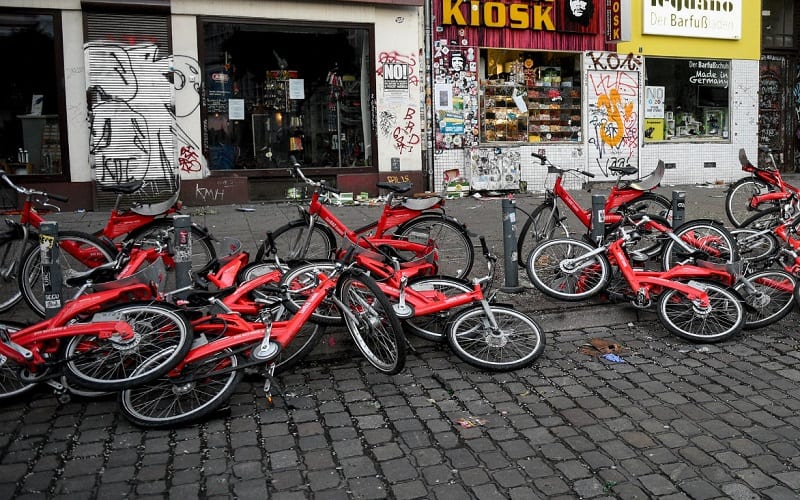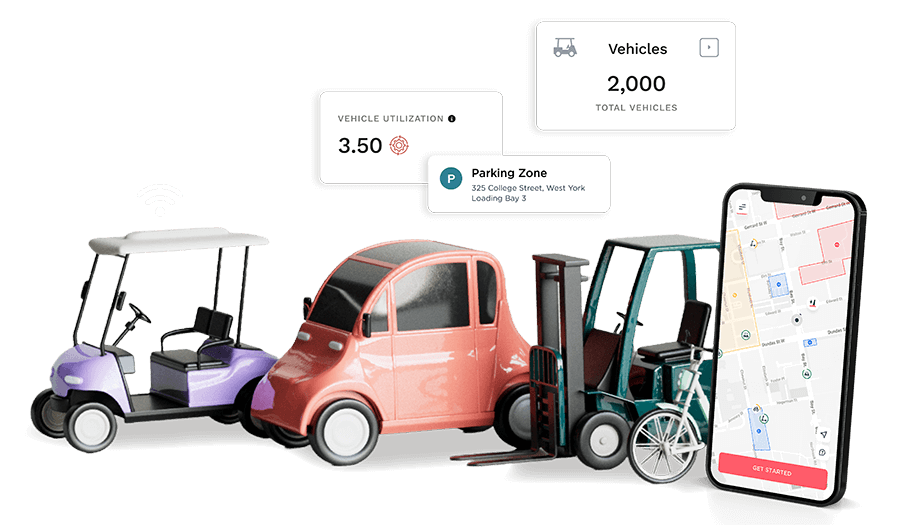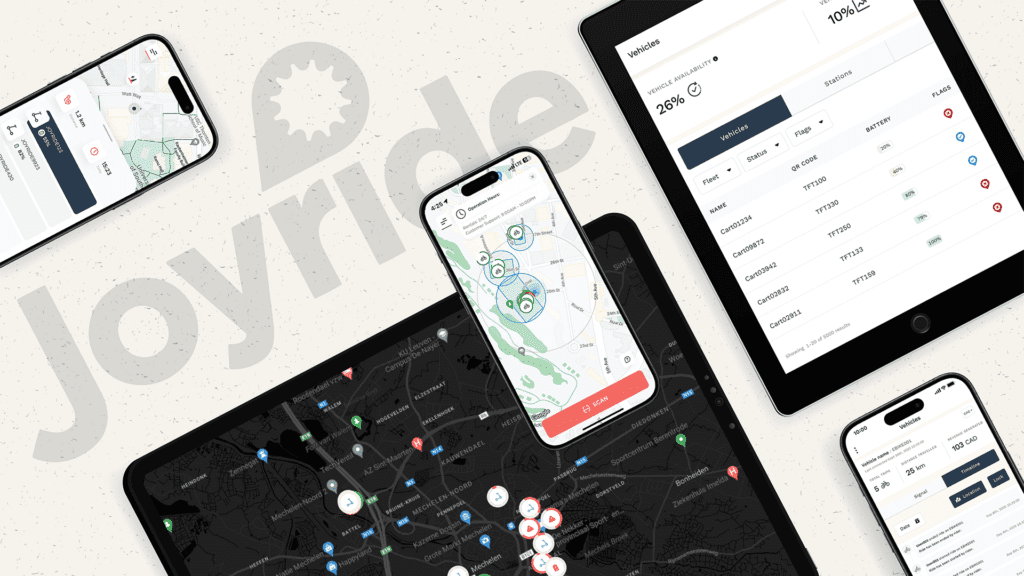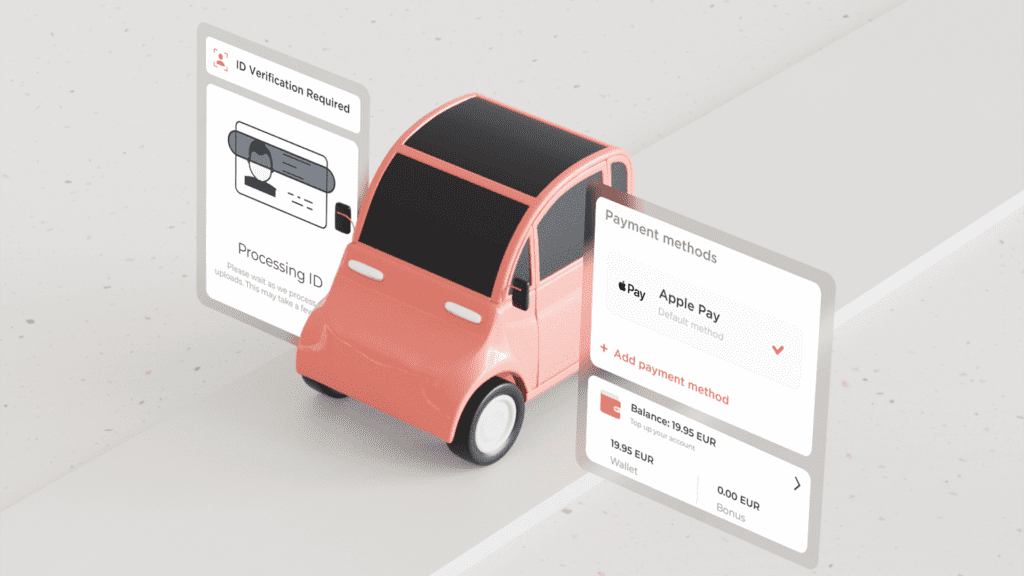It’s not news that dockless bikes schemes have encountered a few problems, particularly in Europe and North America. Here, we look more closely at the issues dockless bike schemes have faced, and how operators have tackled them.
Dockless bikes have hit the headlines in recent weeks, and not in a positive way. Bikes being stolen, vandalized, discarded and piled up in corners to make street art have cast the schemes’ sustainability in doubt.
And that’s not the only problem. Local government, though still quite permissive, have become more interventionist in recent months. Anyone setting up a dockless bike scheme can expect some supportive but strong oversight from government and agencies.
1. People and the commons
There should be no ecological or practical downside to dockless bikes. They are cheap, green and accessible. Why wouldn’t we welcome the scheme and take care of the bikes?
But all over the world, dockless bike schemes have experienced problems with bad behaviour from its users. In Beijing, China, there are 16 million dockless bikes. And perhaps it’s their oversupply which has meant that bikes get dumped randomly in streets and public squares, countless get stolen or thrown into lakes and rivers.
The problem has led commentators to question society’s commitment to morality or the ‘tragedy of the commons’ – that we are so self-interested we can’t use shared or public resources properly.
Eanna Lalor, Head of Digital and Communications at Urbo, says, “We don’t bury our heads in the sand about this, but rather create strategies and policies to mitigate the negative impact as best we can.”
2. Vandalism and theft
Wherever there are human settlements, there is anti-social behaviour. So the fact that dockless bikes have been vandalized or stolen should be no surprise.
Reporter Helen Pidd said this about the Manchester Mobike scheme two weeks into its launch: “There are Mobikes in the canal, Mobikes in bins and I am fed up with following the app to a residential street where there is clearly a Mobike stashed in someone’s garden.”
Given their importance to our environment, the public reaction to the bikes in Manchester was something of a tragedy. But how do companies deal with the problem?
“With vandalism,” says Lalor, “the Urbo bike is fitted with tamper proof parts, meaning our parts are tough to dismantle and have no commercial value. We also have real-time GPS tracking and an anti-theft alarm fitted to every bike. It means if a bike gets stolen, we know where it is, and the alarm goes off immediately. Our smart lock is also a steel composite lock, with three fitted bolts – meaning it’s pretty tough to remove.”
So better technology can help with the anti-social element.
3. Parking
Poor parking is a huge dilemma for dockless bike schemes, particularly as they grow in number.
“To tackle inappropriate parking,” says Lalor from Urbo, “we use a point system. Users are rewarded for parking in the designated hubs. If a user breaks parking rules, he or she runs the risk of being removed from the app.”
Urbo argues that their ‘Park Safe Strategy’ – which includes geo-fencing, parking hubs, real-time redistribution and safe parking credits – also helps. “The goal is to ensure bikes are readily available, not obstructing the public, and parked in designated areas. The last thing we want is for an area to have too many bikes, or have bikes parked in unsuitable areas,” says Lalor.
That’s got lousy parking covered, but what about all those discarded bikes? “When bikes are parked incorrectly,” Lalor confirms, “our people on the ground (Urbo Wardens) are notified immediately through an integrated dashboard, they then move the bike.”
Steve Pyer, Mobike’s UK General Manager, thinks that the key is to do the research and understand what a city needs: “The biggest lesson is making sure the bikes are distributed properly within all of our operating areas. We have to tailor the scheme as much as possible to the local city, demand, and cycling culture.”
“For instance, the number of bikes needs to be proportional to the size of the areas they are available in – so that as many users as possible can find a bike when they want one. When we identify gaps in supply, we work closely with local councils in each city to understand patterns in different areas. This includes establishing where are the most popular ‘hubs’ for the bikes.”
So poor parking is part enforcement and part better management of dockless bike fleets. And that needs the help of government too. But are city governments supportive?
4. Dealing with wary governments
City governments are getting increasingly concerned about bikes littering the streets or even parked in unsafe places. Large Chinese companies like Mobike and Ofo, which are largely unregulated in Chinese cities, face tighter oversight in Europe, potentially killing their business model.
Government also has a number of penalties up its sleeve to tackle the dockless bike companies, such as restricting the size of the fleet or not issuing licenses altogether.
The best way to prevent this is to be on top of poor user behavior. According to a position paper by the Platform for European Bicycle Sharing & Systems (PEBSS), while city councils ultimately welcome unlicensed dockless bike schemes, they prefer to be working with the providers and have a properly regulated system.
PEBSS, the European Cyclists’ Federation (ECF) and Advancing Public Transport (UITP), has come up with an eight-point policy framework to help cities manage dockless schemes – and make them work better for all.
PEBSS, ECF and UITP’s Policy Framework to manage dockless schemes
1. A licensing system to aid self-regulation by dockless bike companies.
2. Measures to ensure orderly streets – providing bike parking bays, for example, or fining companies for poor practice. Companies should have their own policies for preventing bad behaviour.
3. Schemes should have quality and safe riding stock.
4. Proper servicing of stock aided by smart technology.
5. Operators must be able to ‘rebalance’ stock – make sure bikes are distributed properly and take steps if they are not.
6. As suggested by the idea of Mobility as a Service (MaaS) operators should cooperate with transport authorities to make sure all public transport systems are coordinated.
7. Public authorities should be able to access bike share data to improve its functioning.
8. Operators should be able to provide public authorities with a business plan that deals with set up, operation and termination of the service.
It’s not that hard
Any dockless bike scheme that works with local government and public transport bodies, analyses and does problem-solving, and has a set of policies in place to make sure the public realm is managed correctly, should not encounter too many hitches.
And it’s this strategic thinking that will sort the operators in it for the long-term from those that will leave the scene, says Jack Song from LimeBike. “Many dockless bikeshare companies in this space will launch and leave. They do not truly monitor and respond to the community’s urban mobility needs in real time. Let’s just say “Dump and Leave” is NOT LimeBike’s style.”
We all know that resolving the problem of pollution and congestion in our cities is an absolute priority, and, as Song argues, “That is the bigger picture beyond one person vandalizing a bike from an ecosystem.” Everyone has something to gain from the dockless bike. So let’s work together to make it a success.

Deborah Talbot
is a researcher and journalist specialising in regeneration, transport, culture and all things urban







